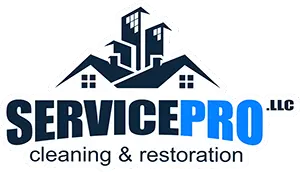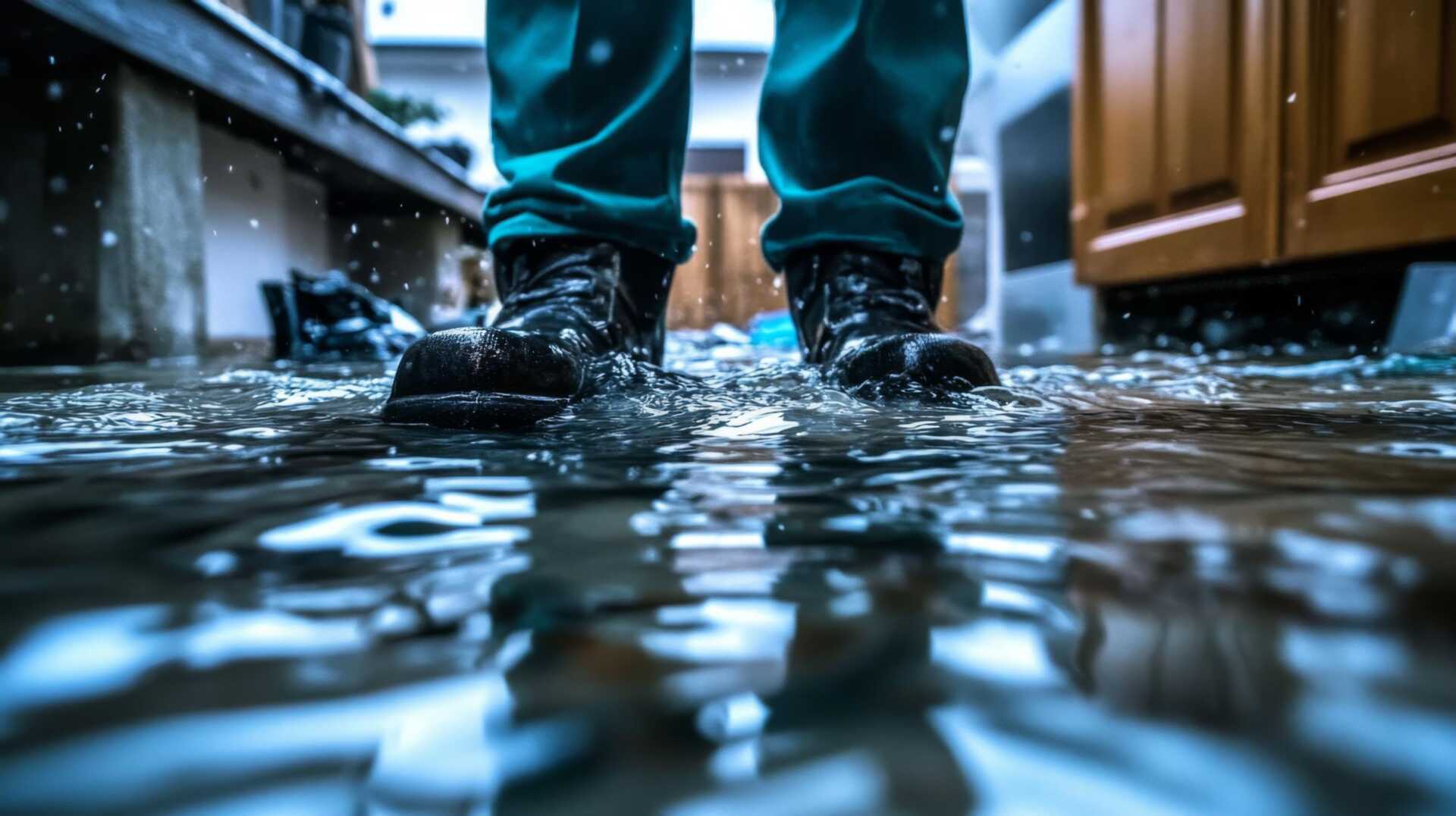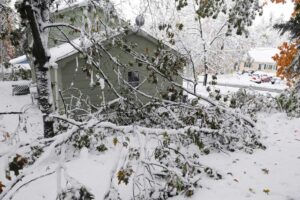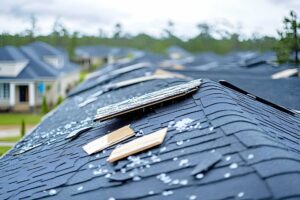Imagine walking into a room where the air is thick with moisture, much like stepping into a steamy shower. Flooding can leave your home in disarray, but knowing how to extract water quickly and efficiently is vital. With the right techniques and tools, you can restore your space and prevent long-term damage. So, what’s the first step in this essential recovery process?
Key Takeaways
- Inspect the area for structural stability and wear protective gear to ensure safety during water extraction.
- Shut off utilities and remove belongings to prevent further damage before starting water removal.
- Utilize wet/dry vacuums and submersible pumps for efficient extraction of standing water.
- Implement industrial dehumidifiers and fans to promote drying and prevent mold growth.
- Regularly monitor humidity levels with moisture meters to ensure thorough drying of affected areas.
Assessing the Damage and Safety Precautions
Before you start extracting water after a flood, it’s crucial to assess the damage and take safety precautions.
Begin your damage evaluation by inspecting the affected areas for structural stability. Look for signs like cracks in walls or sagging ceilings; if you notice any, it’s best to steer clear until professionals assess it.
Next, prioritize your safety by following established safety protocols. Wear protective gear, including gloves and boots, to shield yourself from contaminants.
Verify the electricity is turned off to avoid electrocution risks. If you smell gas, evacuate immediately and contact the authorities.
Keep in mind that floodwaters may contain hazardous materials, so avoid direct contact.
Gathering Necessary Equipment and Supplies
Before you start the water extraction process, you’ll need to gather essential equipment and supplies.
Make sure you have the right tools, including safety gear, to protect yourself during the cleanup.
A clear checklist will help you stay organized and efficient as you tackle the task ahead.
Essential Equipment Checklist
When tackling water extraction after a flood, having the right equipment can make all the difference. Start by gathering essential tools like submersible pumps, wet/dry vacuums, and industrial fans. These items will help you efficiently remove water and dry out affected areas.
Don’t forget to include moisture meters to monitor dampness levels.
Regular equipment maintenance is vital to ensure everything functions properly during the extraction process. Check hoses for leaks, clean filters, and test all machinery beforehand.
This preparation enhances safety and boosts your confidence in handling the task. With the right gear and a proactive mindset, you’ll be well-equipped to tackle the challenges of water extraction and restore your space to its former condition.
Safety Gear Requirements
Having the right equipment is only part of the equation; protecting yourself during the water extraction process is equally important.
You need to gear up properly to avoid injury and safeguard your health. Here’s what you should wear:
- Safety goggles to shield your eyes from debris and contaminants
- Waterproof gloves to keep your hands dry and protected
- Rubber boots to prevent slips and keep your feet safe
- Dust mask to avoid inhaling mold spores or other irritants
- Long-sleeve clothing to protect your skin from potential hazards
Water Removal Tools
To effectively extract water after a flood, you’ll need the right tools and supplies at your disposal. First, invest in powerful water pumps; they’re essential for quickly removing large volumes of water. Depending on your situation, submersible or trash pumps can be ideal options.
Next, grab extraction vacuums specifically designed to handle residual water in carpets and hard surfaces. These vacuums pull water and help in drying out affected areas.
Don’t forget to stock up on hoses, extension cords, and backup batteries. Having these tools ready ensures you can tackle the flooding efficiently, minimizing damage and restoring your space.
Initial Water Removal Techniques
As soon as the water starts to recede, it’s important to act quickly to minimize damage and prevent mold growth.
Your initial techniques in this emergency response phase are significant. Here’s what you should do:
- Shut off utilities to prevent further hazards.
- Remove furniture and belongings from affected areas to reduce water exposure.
- Use a wet/dry vacuum to extract standing water efficiently.
- Open windows and doors to promote ventilation and aid in drying.
- Use fans and dehumidifiers to speed up the evaporation process.
Advanced Water Extraction Methods
While initial water removal techniques are essential, employing advanced extraction methods can greatly enhance your recovery efforts and minimize long-term damage. You can leverage advanced techniques like submersible pumps and truck-mounted extraction systems to remove water efficiently from flooded areas.
These innovative solutions speed up the extraction process and ensure that more water is removed, reducing the risk of mold growth and structural damage.
Utilizing infrared technology can help you identify hidden moisture pockets, allowing for targeted extraction. Additionally, consider using portable extraction units for hard-to-reach areas, ensuring no moisture lingers.
Drying and Dehumidification Process
Once the water has been extracted, the next critical step is the drying and dehumidification process. This phase is essential to prevent mold growth and further damage.
You’ll want to implement effective dehumidification techniques while actively monitoring moisture levels throughout your space.
Here are some important steps to follow:
- Use industrial-grade dehumidifiers for ideal results.
- Ensure proper ventilation by opening windows and using fans.
- Check humidity levels regularly with a moisture meter.
- Remove wet materials such as carpets or insulation to speed up drying.
- Keep the area warm, as heat helps evaporate moisture.
Preventing Future Water Damage and Mold Growth
After successfully drying and dehumidifying your space, taking proactive measures to prevent future water damage and mold growth is vital.
Start by ensuring proper moisture control in your home. Regularly check for leaks in plumbing, roof, and windows. Seal any cracks or gaps that might allow water to enter.
Invest in a good dehumidifier to maintain ideal humidity levels, ideally between 30% and 60%. This supports mold prevention and creates a healthier living environment.
Consider using mold-resistant paint and materials in areas prone to moisture, like basements and bathrooms. Ensure good ventilation in these spaces, as airflow plays an essential role in moisture control.
Finally, keep an eye on your property after heavy rains. Regular inspections can help you catch potential issues before they escalate, ultimately protecting your home and your peace of mind.
Review
In the aftermath of flooding, swift action contrasts with the chaos left behind. By evaluating the damage and prioritizing safety, you take the first essential step toward recovery. With the right equipment and techniques, you can transform a disaster zone into a dry, safe space. As you dry and dehumidify, remember that prevention is just as important. By staying proactive, you’ll restore your home and protect it from future water damage and mold growth.




